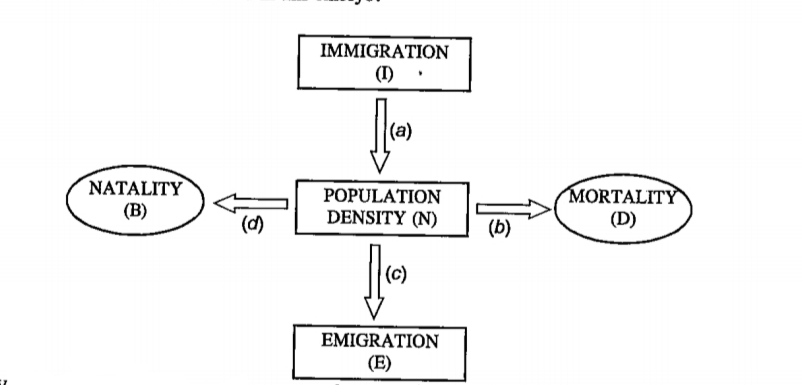In a barn there are 30 rats. 5 more rats enter the barn.6 of the total rats were eaten by cats.If 8 rats are born during the time period under consideration and 7 rats left the barn,find out the resultant population at time (t+1).
 Solution in Punjabi
Solution in Punjabi
Step by step video & image solution for In a barn there are 30 rats. 5 more rats enter the barn.6 of the total rats were eaten by cats.If 8 rats are born during the time period under consideration and 7 rats left the barn,find out the resultant population at time (t+1). by Biology experts to help you in doubts & scoring excellent marks in Class 12 exams.
Topper's Solved these Questions
Similar Questions
the unique event of flowering plant is-
02:12View SolutionA disease caused by an autosomal primary non-disjunction is.
03:14View SolutionA biologist studied the population of rats in a barn. He found that the average natality was 250, average mortality 240, immigration 20 and emigration 30. The net increase in populations is :
03:07View SolutionA biologist studied the population of rats in a barn. He found that th avarae natality was 250, average mortality 240 immigration 20 and emigration 30. The netincrease in population is
03:13View Solutionএকটি ইঁদুরের পপুলেশনের জনসংখ্যা হল 300 |1 বছরে ওই ইঁদুরের পপুলেশনে মারা যায় 30টি ইঁদুর তাহলে ওই ইঁদুরের পপুলেশনের মৃত্যুহার কত?
04:27View SolutionThe population of a rat population is 300. If 20 new rats are born in the population of that rat in 1 year, then what is the birth rate of the population of that rat?
View SolutionA biologist studied the population of rats in a barn . He found that the average natality was 250 , average mortality 240 , immigration 20 and emigration 30. The net increase in population is :
View SolutionA biologist studied the population of rats in a barn. He found that average natality was 250 average mortality 240, immigration 20, and emigration 30. The net increase in population is
05:00View SolutionA biologist studied the population of rats in a barn. He found that the average natality was 250, average mortality 240, immigration 20 and emigration 30. The net increase in population is
02:10View SolutionA biologist studied the population of rats in a barn. He found that the average natality was 250, average mortality 240, immigration 20 and emigration 30. The net increase in populations is :
04:27View SolutionA biologist studied the population of rats in a barn. He found that the average natality was 250, average mortality 240, immigration 20 and emigration 30. The net increase in populations is :
01:59View SolutionA biologist studied the population of rats in a barn . He found that the average natality was 250 , average mortality 240 , immigration 20 and emigration 30. The net increase in population is :
04:27View SolutionA biologist studies the population of rats in a barn. He found that the average natality was 250, average mortality 240, immigration 20 and emigration 30. The net increase in population is :
02:12View SolutionA BOTlogist studied the population of rats in a barn. He found that the average natality was 250, average mortality 240, immigration 20 and emigration 30. The net increase in population is :
02:12View SolutionA biologist studied the population of rats in a barn. He found that the average natality was 250, average mortality 240, immigration 20 and emigration 30. The net increase in population is
02:18View Solution

